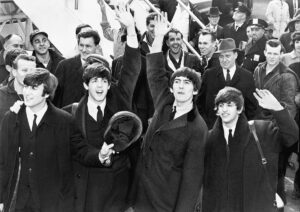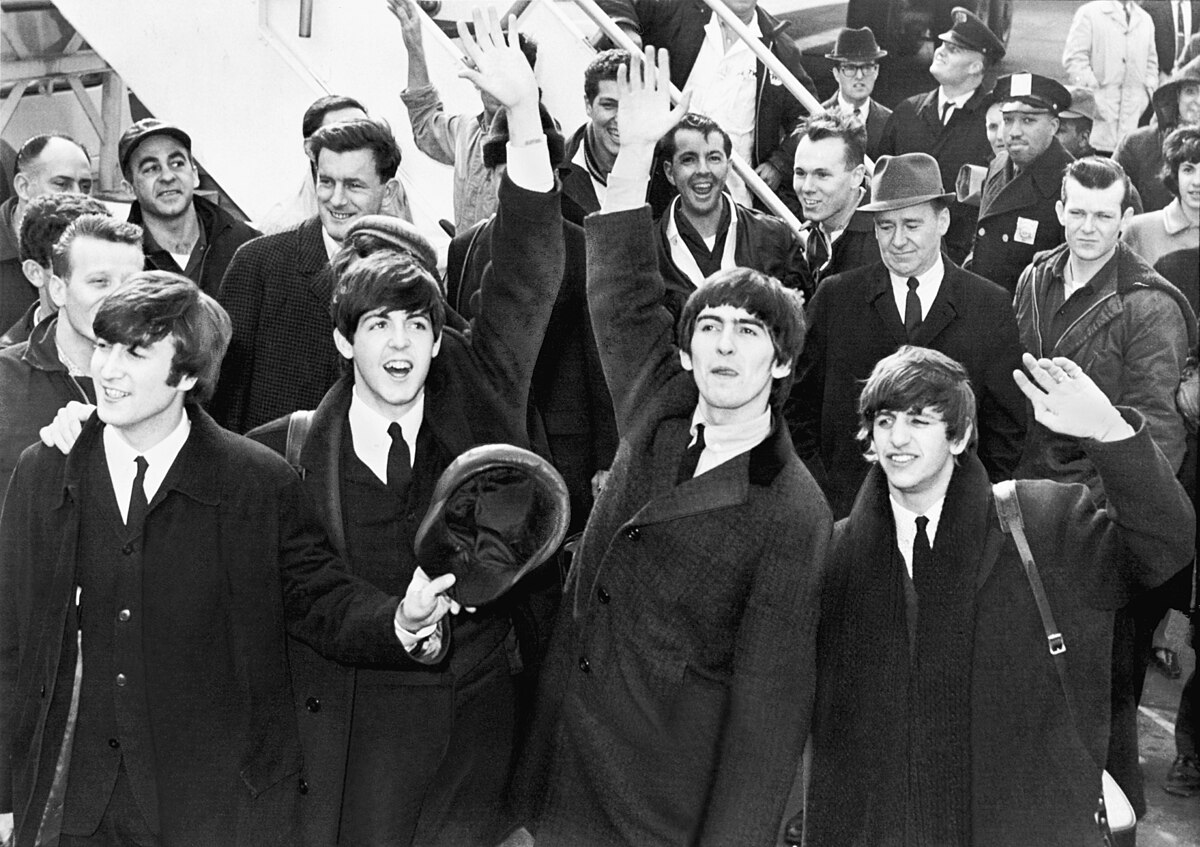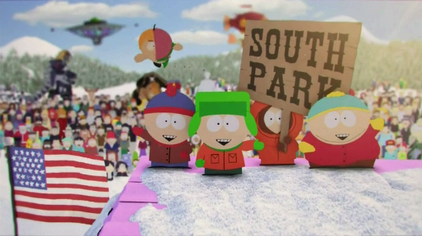Media lives in the moment. That may seem like a wild statement, but think about it. Every day, there is always something happening in the world. With the recent advent of social media, especially with apps such as TikTok, the time in which people absorb and process information can be summarized in as little as a minute-long clip. These digital natives, individuals who have always experienced a totally digital world, have seen topics as mundane as a recipe for tacos to an advertisement for a true crime podcast and a clip of cute dog reactions. Media surrounds us in many ways. However, with constant exposure to different forms of media, there come many unique glimpses of humanity at its most raw and emotionally vulnerable state. It can be scary and confusing. It can be beautiful and inspiring. Media is constantly evolving, and, in these moments, history is made.
July 20, 1969.
Every American is glued to their television screens as astronauts Neil Armstrong, Buzz Aldrin, and Michael Collins step off their ship onto the cold, rocky surface of the moon. It is a time of fierce turmoil for the U.S. Twelve years earlier, the Soviet Union launched its first artificial satellite, Sputnik 1, into the global atmosphere, marking a turn in what would be known as the Space Race. For fear of losing total technological control, President John F. Kennedy and the National Aeronautics and Space Administration (NASA) worked tirelessly to try and beat the Russians to be the first country on the moon.
 The Apollo 11 Moon landing has since become one of the most profound moments in American history. This was the first time everyone in the world had access through their televisions to be exposed to the wonders beyond their everyday lives. The gravitas of Neil Armstrong’s famous “one small step for man” became a household phrase that every American held onto and engrained itself into popular culture. A more recent example is referenced in the “On Top of the World” music video for the band Imagine Dragons. Even so, how history influences art can also be based on tragedy, as shown in the events after September 11, 2001.
The Apollo 11 Moon landing has since become one of the most profound moments in American history. This was the first time everyone in the world had access through their televisions to be exposed to the wonders beyond their everyday lives. The gravitas of Neil Armstrong’s famous “one small step for man” became a household phrase that every American held onto and engrained itself into popular culture. A more recent example is referenced in the “On Top of the World” music video for the band Imagine Dragons. Even so, how history influences art can also be based on tragedy, as shown in the events after September 11, 2001.
September 11, 2001.
A calm day in New York City is interrupted by the screeching sound of an airplane streaking across the peaceful blue morning sky. In an instant, America is changed forever. The North Tower is hit by a plane, and only 15 minutes later, the South Tower is hit. The world grinds to a halt as onlookers watch in horror at the massive plumes of smoke billowing out of each tower. The aftermath of the attack instills a fear in every American; we are no longer safe. In under two hours, the North and South Tower both collapse. It isn’t until President Bush addresses the nation that we learn that the Pentagon in Washington D.C. was confirmed to be hit by a third plane. The fear is cemented. There is no going back.
After the wake of the September 11th terrorist attacks, the unlawful use of violence and intimidation in the pursuit of political aims, the media shifted toward a more patriotic approach. The radio station Clear Channel Communications (now known as iHeart Media) placed an unofficial ban on 164 songs that they deemed as “anti-American”. In his article reflecting on the 9/11 attacks, former operation manager at AAA Entertainment John Norton commented on a few songs that were pulled from radio waves.
“All songs by Rage Against the Machine were pulled because they were seen as anti-American. That … the ‘machine’ being capitalism and/or government oppression is the whole idea behind Rage. Alanis Morrissette’s “Isn’t It Ironic” was apparently on that list … There were some Beatles songs on that list. “Ticket to Ride,” “Day in the Life,” “Lucy in the Sky with Diamonds.” The Bangles “Walk Like an Egyptian.” I’m guessing because it was a Middle Eastern reference.”
If you wish to listen to the list of the songs that were banned, a playlist can be found here.
 The songs that were chosen to be banned ranged from a variety of different artists and genres, but the message that Clear Channel Communications was spreading was clear; there was a national fear of the unknown that was spreading across the U.S. Some artists faced the attacks with anger and furious patriotism, such as with Toby Keith’s “Courtesy of the Red, White and Blue (The Angry American). Other artists took the time to mourn with the rest of the country, putting words to a new feeling of loss and confusion as shown in songs like Alan Jackson’s “Where Were You (When the World Stopped Turning)”. Ultimately, the tragedy of September 11th marked another turning point in media history. Under the banner of this national mourning, artists were able to carve their feelings into their art and redefine their self, an individual’s nature and identity resulting from reflections on social interactions, into a cause and cry of hope and a symbol of freedom.
The songs that were chosen to be banned ranged from a variety of different artists and genres, but the message that Clear Channel Communications was spreading was clear; there was a national fear of the unknown that was spreading across the U.S. Some artists faced the attacks with anger and furious patriotism, such as with Toby Keith’s “Courtesy of the Red, White and Blue (The Angry American). Other artists took the time to mourn with the rest of the country, putting words to a new feeling of loss and confusion as shown in songs like Alan Jackson’s “Where Were You (When the World Stopped Turning)”. Ultimately, the tragedy of September 11th marked another turning point in media history. Under the banner of this national mourning, artists were able to carve their feelings into their art and redefine their self, an individual’s nature and identity resulting from reflections on social interactions, into a cause and cry of hope and a symbol of freedom.
Since then, the events of September 11th, 2001, have been viewed as one of the darkest times in recent American history. Despite this, the art that came from it inspired a generation to reflect on the times that came before and the times that would come after. The media helped everyone introduce a communal sense of togetherness, but what happens when art becomes self-aware of its purpose?
March 15, 2020.
In light of the announced COVID-19 virus, all states in the U.S begin to issue a national shutdown of businesses, restaurants, and schools. In a month, nearly all states have reported cases of COVID-19. The state of the world has entered a new era. In a strange way, the world has gone quiet. Normally packed city streets, clubs, and hangout spots are left abandoned, silently echoing the times that came before. The number of suicides in the U.S. rises roughly 200 to 300 persons each month, starting at 3924 in March. By July, it hits its peak at 4,000 deaths. The world needed another voice, something (or someone) that could speak the words that no one knew how to say. Enter comedian Bo Burnham.
Following his absence from comedy in 2016, Burnham released his comedy special, Inside, on Netflix on May 30th, 2021. Taking place over the course of an entire year, Burnham shot, edited, acted, and performed a musical comedy special by himself that revealed his own mental health struggle in relation to the global pandemic. In her article “Estrangement, Performativity, and Empathy in Bo Burnham’s Inside (2021),” author Carmen Bonasera highlights the ways in which Burnham connects with the audience in the opening song, “Content”.
“Without even mentioning the words ‘pandemic’ or ‘Covid’, the song not only explicitly refers to the lockdown experience, but immediately appeals to viewers, as it draws on aspects that have become familiar to a global audience – the reference to the missed haircut is highly relatable.”
Bonasera’s example about haircuts, as she mentions, ties into thinking about the larger sociological context of the film. The experience of getting a haircut adds to the universal cultural experience of living through the pandemic. The mundane act of getting a haircut before has now been turned into a sign of the times and feeds into the larger cultural sociological imagination, or the ability to see the details of our lives in the context of larger social structures as opposed to merely personal choices or personal troubles. In addition to “Content,” Burnham also tackles his own experiences in a later song called “That Funny Feeling”. Here, he expresses his mental illness, or abnormal thoughts, behaviors, emotions, or actions that are a threat to the individual or society, of being dissociated from the outside world by comparing the constantly questioning state of his mind.
“A gift shop at the gun range / A mass shooting at the mall […] / A book on getting better / Hand-delivered by a drone.”
In these two examples, Inside serves as more than just commentary on Bo Burnham’s personal point-of-view on the events of the pandemic. The film provides a snapshot of the global perspective that COVID-19 ushered in through the content of the film itself. The comedy provides merely a backdrop to the frightening state of introspection and depression that’s left when sitting alone with your thoughts. The absence of community brings a sense of loneliness. However, through art and the media we consume, there’s a place for connection and holding space for all feelings (even if they now seem uncomfortable or unknown). In the time it’s experienced, it may feel like an eternity. When it’s given space, it’s only just another moment.
Media lives in the moment. The media that gets made every single day leaves an impact, no matter how long it says online. The impact could be as simple as a fleeting smile or a joke you remember weeks later. With constant attention being drawn to so many different sources and experiences, there’s a place for empathy to grow and foster into something that lasts longer than the media we consume: the experiences and emotions that all make us human.
Polley is a guest blogger at UITAC Publishing. UITAC’s mission is to provide high-quality, affordable, and socially responsible online course materials.
Images used in this blog:
- The Apollo 11 Launch by NASA; restored by Michel Vuijlsteke at Wikimedia Commons licensed using Creative Commons Attribution-Share Alike 4.0 International. This image has not been altered.
- The Beatles arrive at JFK Airport by United Press International, photographer unknown at Wikimedia Commons licensed using Creative Commons Attribution-Share Alike 4.0 International. This image has not been altered.




